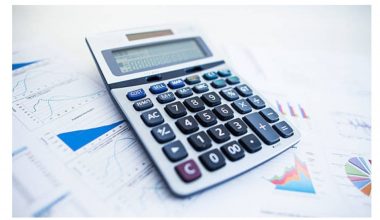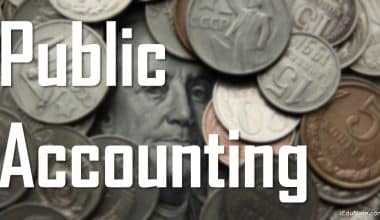The future value of money determines how time affects it. Using future value and other measures can help you make smart financial decisions. All financial planning is dependent on the future value of money, from your decision to buy or lease a car to your company’s decision to invest in new equipment. Below are the steps and formulas to calculate the future value of money.
Future Value of Money
The future value of money is the value of an asset now based on an anticipated rate of increase in the future. .
Knowing the future value of money enables investors to make sensible investment decisions based on their anticipated needs. However, external economic factors like inflation could diminish the value of money in the long run.
It might be difficult to predict the future value of money depending on the type of asset. For the estimation of future value, there should be a constant growth rate. It is easy to determine future worth with accuracy when money is in a savings account with a guaranteed interest rate. However, it could be more difficult to invest in stocks or other securities with a more variable rate of return.
Pros And Cons of Future Value of Money
The future value of money might be useful in some situations. However, the computation has restrictions, and in some cases, it might not be suitable.
Pros
- The future value of money permits planning. A company or investor may be aware of their current circumstances and be in a position to anticipate specific outcomes for the future. By combining this information, people may understand their financial condition and make plans for the future. For instance, future value can be used to calculate how long it will take a home buyer to accumulate the $100,000 needed for a down payment.
- It makes comparisons easier. Imagine a potential investor assessing the pros and cons of various possibilities. One requires an investment of $5,000 that will return 10% over the following three years. The other requires an investment of $3,000 and generates returns of 5% in the first year, 10% in the second year, and 35% in the third year.
- It is simple to determine future worth using estimates. The future value of money does not call for difficult or precise calculations. Because future value is so strongly based on projections, anyone can utilize it in hypothetical situations.
Cons
- Typically, future value presupposes a steady increase. utilize Only one interest rate in the formulae. Even though variable interest rates have future value, the calculations become more difficult and illogical. A situation might have unrealistic parameters in exchange for a streamlined formula that just considers rate because growth isn’t always linear or constant year over year.
- Assumptions about future worth might not come to pass. Because future value is based on assumptions about the future, which may or may not be accurate, the calculations are only estimations. The previous computation of future value is useless if the market is unable to generate that anticipated return.
- Future value could perform poorly in comparisons. In order to compare the two projects, there are some restrictions. Consider the following scenario: An investor has the option of investing $10,000 for a predicted return of 1% or $100 for a predicted return of 700%.
Calculate the Future Value of Money
Calculate the value of money in the future using the future value formula and simple annual interest
There are many formulas available to calculate the future value of money. The fundamental concept behind all of them is the same: calculating future value is by extending current cashflows into the future in accordance with expected growth rates.
The future value of money formula assumes that a single initial investment will remain unchanged for the duration of the investment and that growth will continue at a consistent rate.
Methods of Determining Future Value of Money
Calculate the future value of money, there are two methods to determine the future value depending on the type of interest. If an investment earns simple interest, the FV formula is I(1+(RT)), where I is the investment amount and R is the interest rate.
The number of years is T.
Consider, as an example, a $1,000 investment that is kept for five years in a savings account yielding 10% annual simple interest. In this situation, the FV of the initial $1,000 investment is $1,000 [1 + (0.10 x 5)], or $1,500.
Future worth of money with a compound annual interest
Simple interest operates under the assumption that only the initial investment receives interest. At the end of each period, compound interest applies the rate to the account’s total balance. The initial investment in the aforementioned example earns interest of 10%, or $1,000, or $100. The next year, though, the account balance increases to $1,100 from $1,000. calculating Compound interest is by applying the 10% interest rate to the full debt, which yields second-year interest earnings of 10% $1,100, or $110.
The Future Value of an Investment Earning Compound Interest is calculated using the formula
FV=I(1+R)
where
I = Investment Amount and
R = Interest Rate.
Number of years = T.
Using the aforementioned example, $1,000 invested for five years at a 10% compound interest rate would have an FV of $1,000 [(1 + 0.10)5], or $1,610.51.
What Is the Formula for the Future Value of Money?
The formula for future value (FV), in its simplest version, is FV = PV*(1 + i)n, where “PV” stands for present value, I for interest rate, and “n” for the number of time periods.
For instance, if a person invests $1,000 today and can earn 6.0% interest annually, they will have $1,503.63 after 7 years ($1,000 * (1+.06)7). FV equations, like all calculations of the time value of money, become increasingly complex when more factors are such as potential contributions or withdrawals, fluctuating interest rates, or the frequency of compounding.
What Is Present Value and Future Value in Time Value of Money?
The present value of money must be invested today in order to realize a future event aim. While the Future Value in Time Value of Money is the cash amount that will increase over time when the first investment is made.
Numerous unique elements affect both the present worth and future value of money. Investors can better understand investments and make decisions about whether to accept or reject them by using the present value. The future value in time value of money has little impact on investment decisions because it predicts future profits on investment.
What Are the Steps to Calculate Future Value?
The Future Worth (FV) Formula is a financial concept used to determine the value of cash flow relative to the original receipt at a future period.
Future Value (FV) is calculated by multiplying C0 by (1+r)n.
C0 = Cash Flow at the Starting Point, where (Present value)
n = Number of Periods, r = Rate of Return.
Over time, money’s worth changes. The value of money rises and falls in response to interest rates and inflation. The worth of money held in an investment or interest-bearing account can be calculated. Find out the account’s interest rate, the number of periods, and whether compound or simple interest is earned first. Then, you may enter those figures into a formula to determine the money’s future value.
1. Be aware of how money’s worth changes over time.
2. Future Value Calculation Using Simple Interest
3. Future Value Calculation Using Compound Interest
What Are the Three 3 Sources of Value for Money?
According to academic studies, there are three primary areas from which we might value money throughout our lives: human capital, social capital, and financial capital.
Conclusion
The time value of money asserts that a dollar today is worth much more than a dollar tomorrow. The future value of money is a significant concept in finance. Future value can estimate the value of a dollar, an investment, or a series of cash flows. Future value functions in the opposite direction of discounting future cash flows to the present value.
Related Article
- Present Value Formula: Definitions, Examples, Formula & Calculations
- SIMPLE AND COMPOUND INTEREST: Difference, Formula and Examples
- FAIR VALUE ACCOUNTING: Definition & Benefits of Fair Value Accounting
- RULE OF 72:Meaning and Formula






